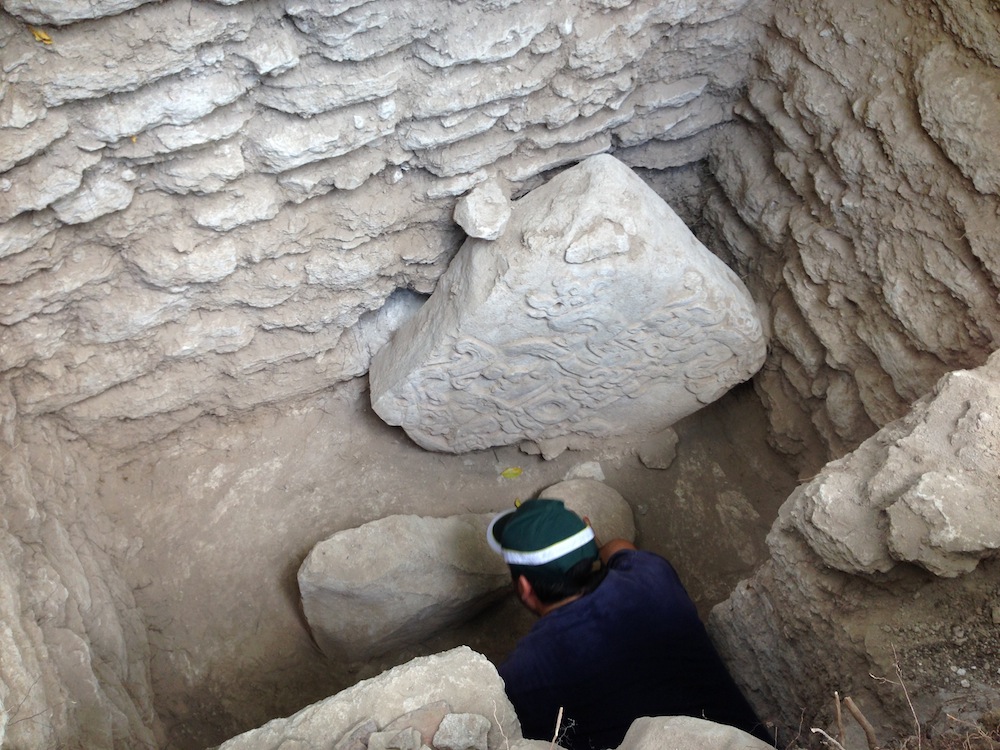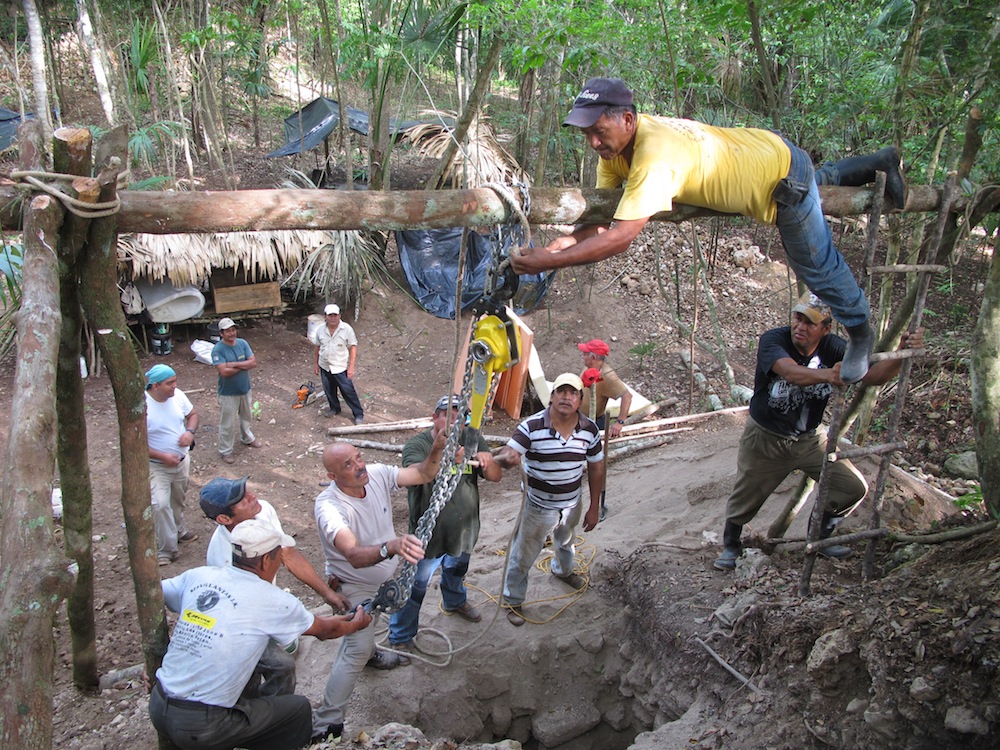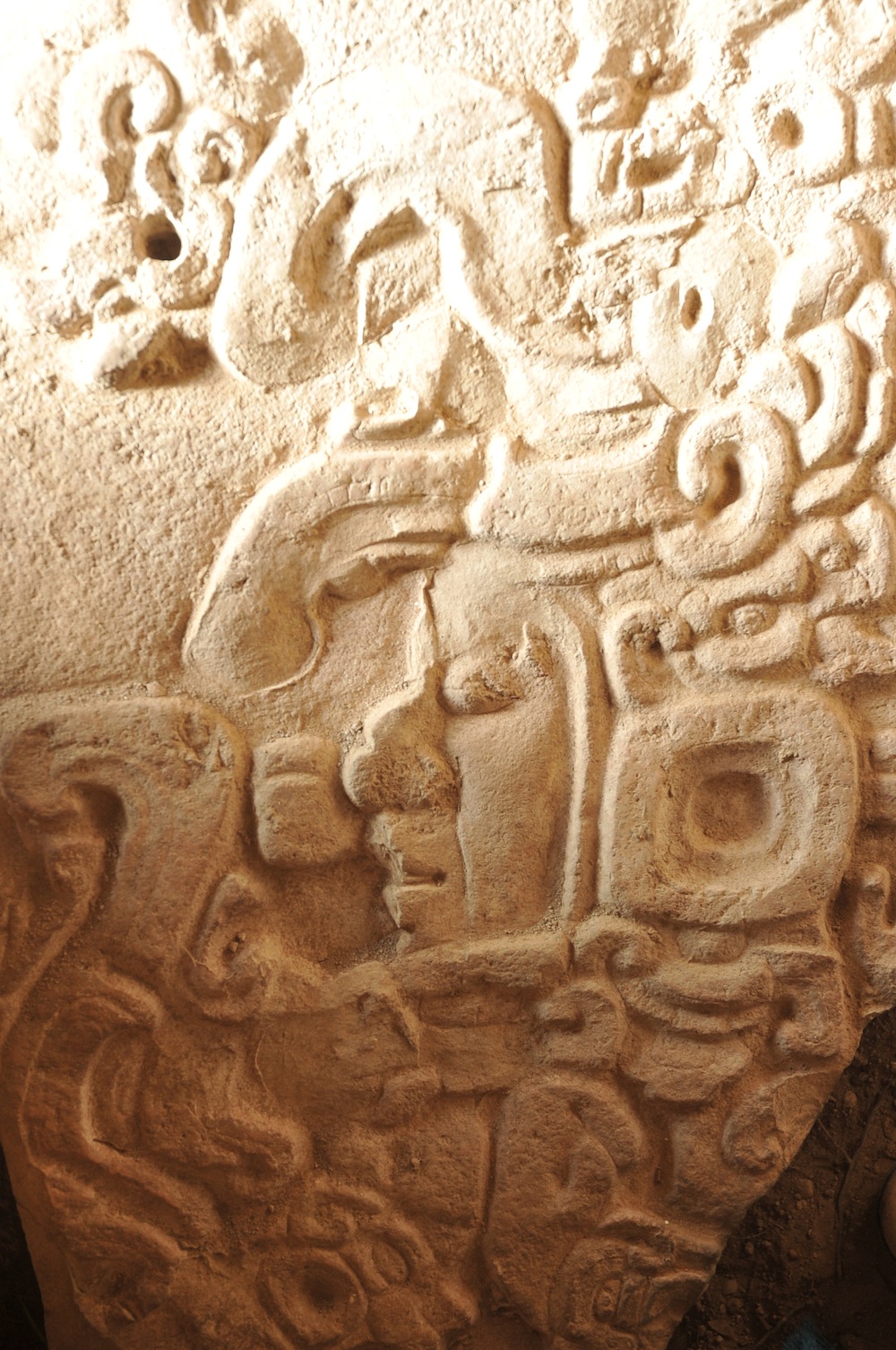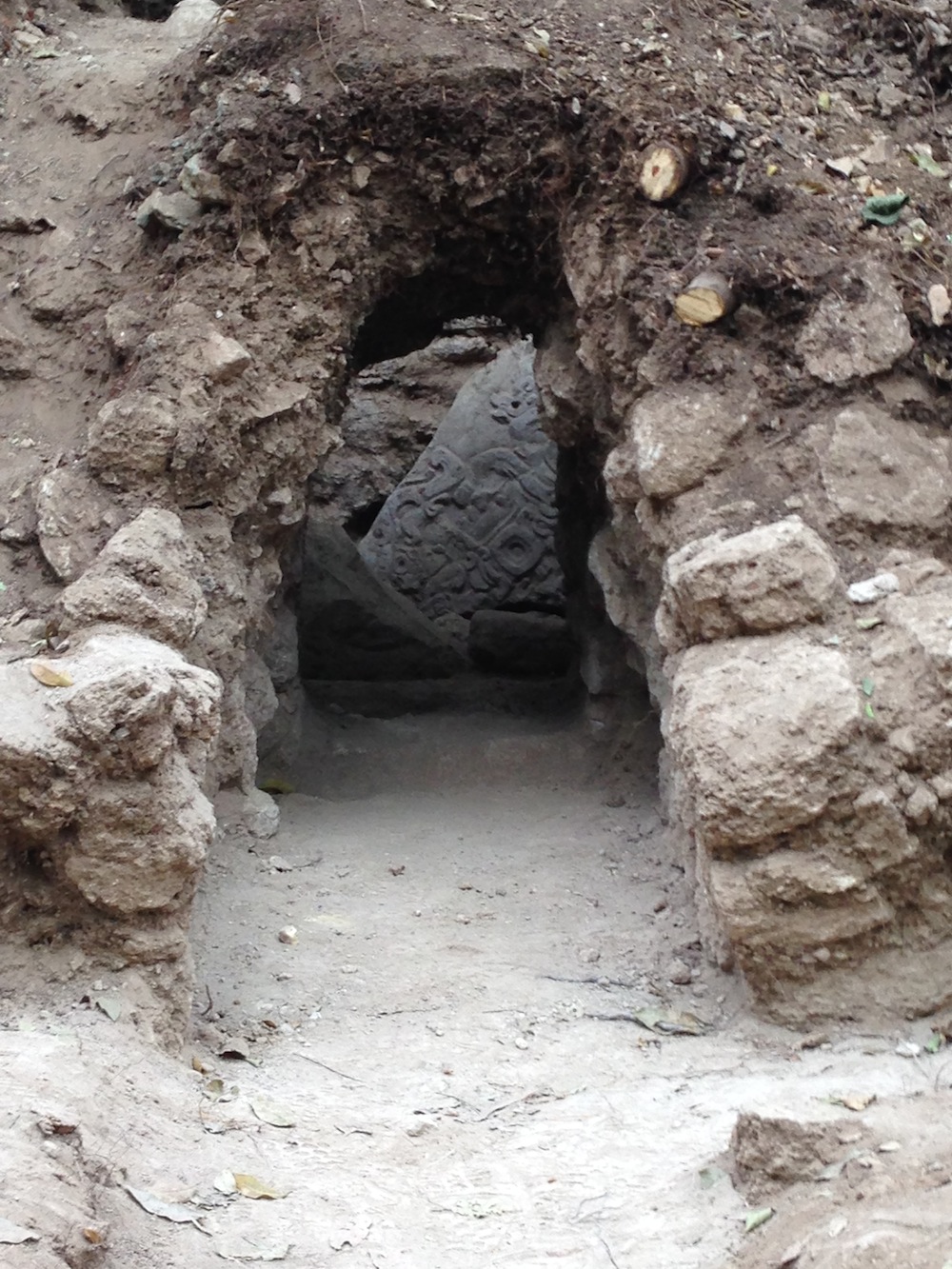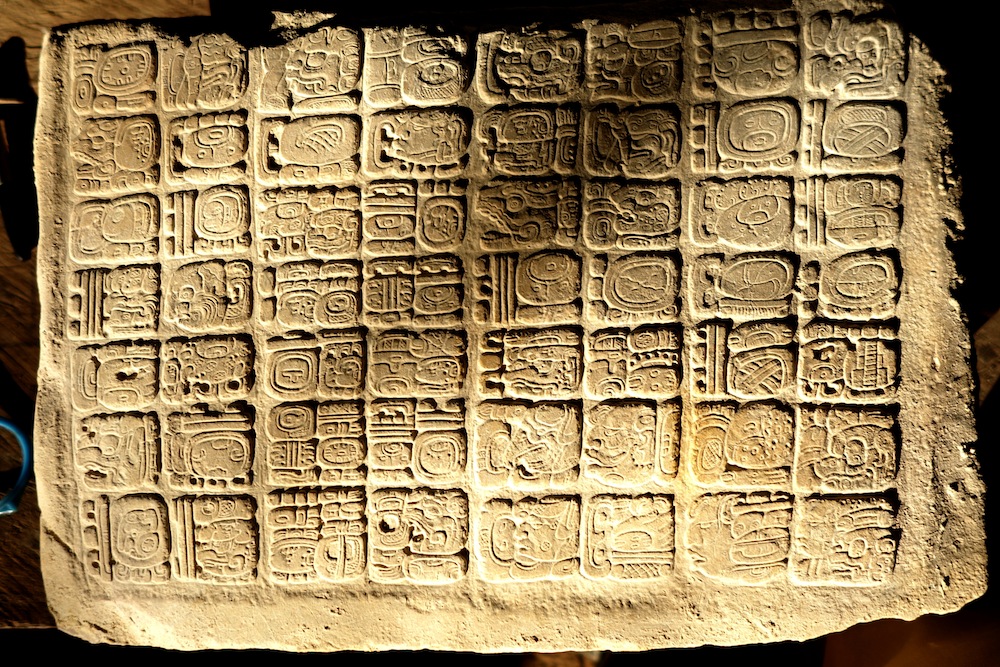Archaeologists working in Guatemala recently uncovered a Mayan stone tablet that is about 1,600 years old. The stone tablet, or stela, commemorates a king who ruled the town, called El Achiotal, during a tumultuous period in Mayan history. [Read the full story on the Mayan tablet]
Archaeologists had been excavating at the site of El Achiotal in Guatemala for many years. While digging a trench, they found a previously unknown antechamber and began excavating it. (Photo credit: Marcello Canuto)
Veneration room
The small room had barely enough room for a few people to crouch inside. But the room had one centerpiece: a broken stela with the head of a king on it. Here, men from the archaeological team work to pull out the stela from the antechamber using a pulley system. (Photo credit: Marcello Canuto)
Honoring a king
The back of the stela, shown here, honors the king's 40th year on the throne. Based on the partially rubbed off date on the back, it's likely that the stela was made in the year A.D. 418. That, in turn means he ascended the throne in A.D. 378. (Photo credit: Marcello Canuto)
Fifth King
Get the world’s most fascinating discoveries delivered straight to your inbox.
The king was actually a fifth king, meaning he was a vassal or sub-lord under another higher power. That raised the question of who was ruling over him. Here, a closeup of the stela, which reveals a man wearing a kind of feathered headdress. (Photo credit: Marcello Canuto)
Big changes
The year A.D. 378 was a big one in Mayan political history. At that time, a king in Teotihuacan came to the massive city of Tikal in what is now Guatemala and deposed or killed the sitting leader. He then placed another person on the throne. The new stela suggests the Tikal overthrow was part of a broader realignment, that also put another leader on the throne in El Achiotal. (Photo credit: Marcello Canuto)
Rise and fall
The stela was placed in the shrine room and pottery shards and debris suggest it was honored for about 200 years, until about A.D. 550 to A.D. 600. Interestingly, another Mayan site, about 12 miles (20 kilometers) away, called La Corona, rose to prominence just as El Achiotal was being abandoned. Here, one of the stela from the La Corona site. (Photo credit: Marcello Canuto)
La Corona
La Corona, at its peak, was a gorgeous courtyard residence. The La Corona stele reveal that the town was also ruled by a sub-lord, but this sub-lord was governed by a separate leadership structure known as the Calakmul. It's possible that the rise of the Calakmul king in La Corona somehow led to the fall of El Achiotal, the researchers speculate. Here, some of the hieroglyphics on a La Corona stela. (Photo credit: Marcello Canuto)
Follow Tia Ghose on Twitter and Google+. Follow Live Science @livescience, Facebook & Google+.

Tia is the editor-in-chief (premium) and was formerly managing editor and senior writer for Live Science. Her work has appeared in Scientific American, Wired.com, Science News and other outlets. She holds a master's degree in bioengineering from the University of Washington, a graduate certificate in science writing from UC Santa Cruz and a bachelor's degree in mechanical engineering from the University of Texas at Austin. Tia was part of a team at the Milwaukee Journal Sentinel that published the Empty Cradles series on preterm births, which won multiple awards, including the 2012 Casey Medal for Meritorious Journalism.


